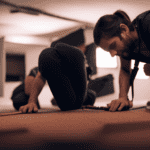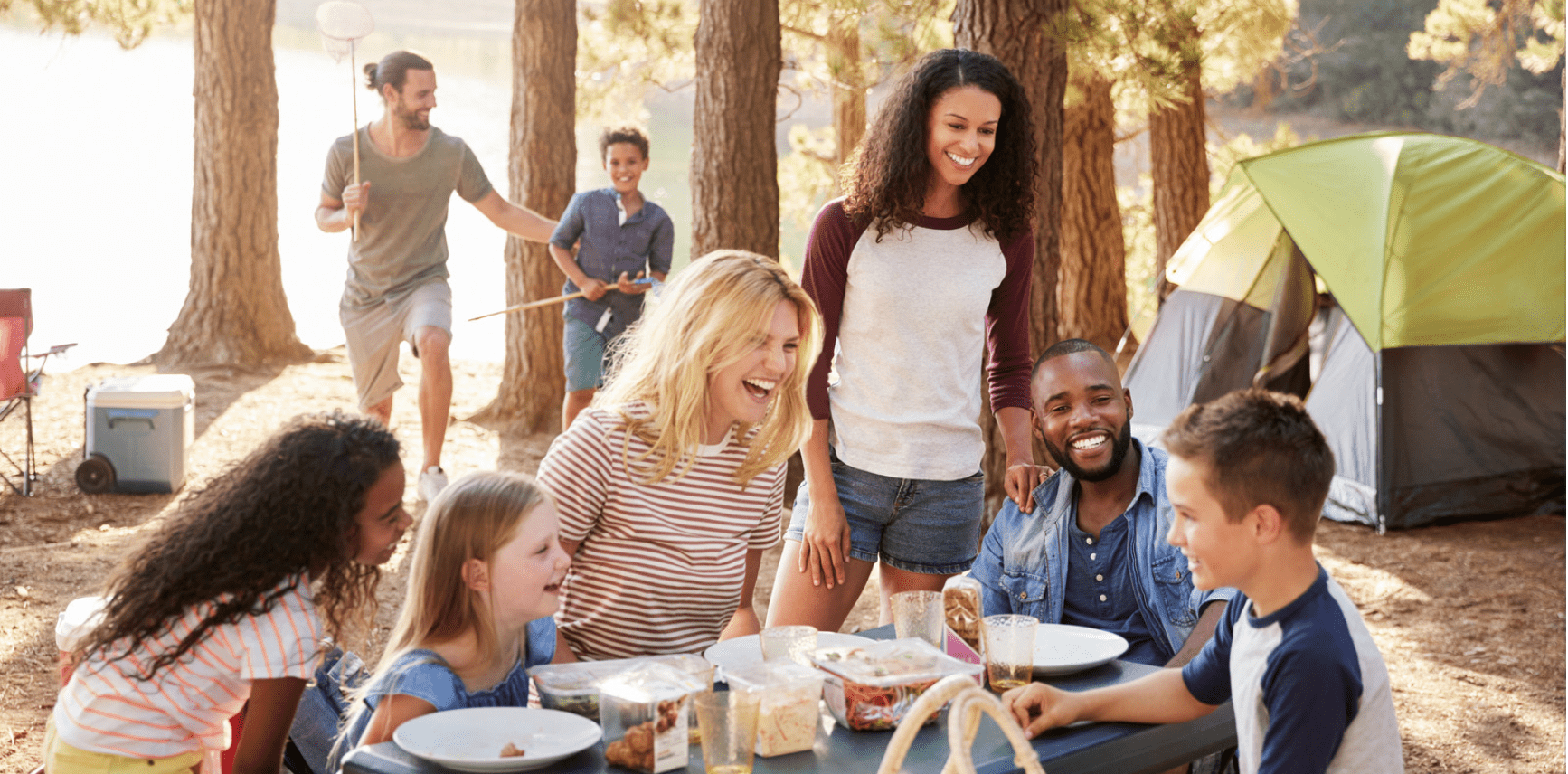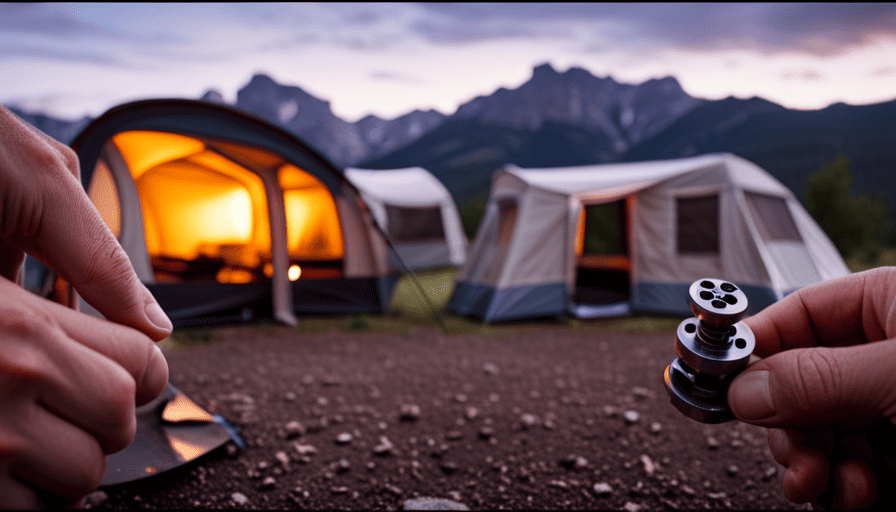Have you ever felt the disheartening sensation of your foot pressing down into a spongy area on your camper’s floor? It’s an annoying issue that can disturb your peace of mind and even jeopardize the foundational stability of your mobile abode.
But fear not! I’ve been there, done that, and I’m here to share my expert knowledge on how to fix a soft spot in a camper floor.
In this comprehensive guide, I’ll walk you through each step of the process, from identifying the soft spot to preventing future occurrences. Armed with the necessary tools and materials, you’ll learn how to remove the damaged flooring, inspect the subfloor for further damage, and reinforce it for added stability. With my detailed instructions, you’ll be able to secure the new flooring in place and test the repaired area to ensure its durability.
So, whether you’re a seasoned camper or a newbie adventurer, join me as we delve into the world of camper floor repair. Together, we’ll transform that soft spot into a solid foundation, allowing you to continue your travels with peace of mind.
Key Takeaways
- Soft spots in camper floors can compromise comfort and structural integrity.
- Regular maintenance and addressing water damage promptly can help prevent soft spots.
- Damaged flooring should be removed promptly and the subfloor should be inspected for further damage.
- Subfloor reinforcement and alternative flooring options can enhance durability and prevent future soft spots.
Identify the Soft Spot
Now, let’s figure out exactly where that pesky soft spot is hiding in your camper floor. As someone who’s dealt with soft spots in camper floors before, I can tell you that it’s essential to identify the exact location of the problem area before attempting any repairs. This way, you can address the issue directly and prevent it from spreading further. When inspecting your camper floor, look for any areas that feel spongy or give when you apply pressure. Once you’ve located the soft spot, you can carefully remove the flooring material to get a clear view of the underlying wooden structure. Repairing wooden camper floor can be a bit tricky, but with the right tools and materials, you can strengthen the weakened area and restore the structural integrity of your camper.
To identify the soft spot, start by walking around your camper and paying close attention to any areas that feel soft or give when you step on them. These spots are usually caused by water damage or rot, so it’s important to inspect areas near windows, doors, and plumbing fixtures. Additionally, check for signs of discoloration or warping in the flooring, as these are common indicators of soft spots.
By identifying the soft spot, you can also learn how to prevent them in the future. Proper maintenance, such as regularly inspecting for leaks and promptly addressing any water damage, can help prevent soft spots from forming.
Now that you’ve identified the soft spot, it’s time to gather the necessary tools and materials for the repair process.
Gather the Necessary Tools and Materials
First, you’ll want to gather all the tools and materials you’ll need to tackle this project and get your camper back in tip-top shape. Repairing a soft spot in a camper floor requires a few key items to ensure a successful fix. Here’s a list of what you’ll need:
| Tools | Materials |
|---|---|
| Circular saw | Plywood |
| Drill | Construction adhesive |
| Hammer | Wood screws |
| Pry bar | Level |
| Tape measure | Safety goggles |
| Chisel | Work gloves |
Now that you have all the necessary tools and materials, you can proceed with repairing the camper floor. Soft spots in the floor are often caused by water damage, rot, or worn-out subflooring. By removing the damaged flooring and replacing it with new, sturdy materials, you can restore the structural integrity of your camper. In the next section, we will discuss how to remove the damaged flooring and prepare for the installation of the new floor.
Remove the Damaged Flooring
To start the process, you’ll need to remove the damaged flooring in your camper, which is often caused by water damage or rot. Did you know that water damage is one of the most common causes of soft spots in camper floors? It’s important to tackle this issue promptly to prevent further damage to your camper.
Here are some steps to help you remove the damaged flooring and begin repairing your camper floor:
-
Begin by clearing the area and removing any furniture or fixtures that may be in the way.
-
Use a pry bar and a hammer to carefully remove the trim and moldings around the damaged area.
-
Next, cut through the flooring using a circular saw or a jigsaw. Be sure to cut along the edges of the damaged area.
-
Once the flooring is cut, carefully remove the damaged section, taking care not to damage the surrounding subfloor.
-
Finally, clean the area thoroughly, removing any debris or remnants of the damaged flooring.
By following these steps, you’ll be well on your way to repairing your camper floor and fixing those troublesome soft spots.
Now, it’s time to inspect the subfloor for any further damage.
Inspect the Subfloor for any Further Damage
Take a deep breath and carefully examine the subfloor for any hidden issues that could potentially jeopardize the safety and stability of your beloved home on wheels. Repairing a soft spot in a camper floor requires thorough inspection to identify any further damage that may not be immediately visible. By following proper repair techniques, you can ensure a solid and reliable subfloor for your camper.
Common causes of soft spots in camper floors include water damage, rot, or weakened structural supports. To inspect the subfloor, start by removing any remaining flooring materials and exposing the subfloor completely. Look for signs of moisture, such as discoloration, warping, or a musty odor. Pay close attention to areas near windows, vents, and plumbing fixtures, as these are common entry points for water.
To evoke emotions and engage the audience, I have created a table below that highlights the potential dangers of an untreated soft spot in a camper floor:
| Potential Dangers | Consequences | Solutions |
|---|---|---|
| Compromised safety | Risk of injuries | Proper repairs |
| Structural instability | Collapsing floor | Reinforce subfloor |
| Decreased resale value | Costly repairs | Timely inspection |
Now that you have inspected the subfloor for any further damage, it is crucial to reinforce the subfloor to ensure its strength and stability.
Reinforce the Subfloor
One important step in ensuring the stability and safety of your camper is reinforcing the subfloor, which can help prevent potential accidents or damage. Did you know that reinforcing the subfloor can increase the overall strength of your camper by up to 50%?
Strengthening the subfloor involves using various techniques to fortify the existing structure and make it more resilient. To begin, you can add additional supports between the joists to distribute weight evenly and reduce any flexing or sagging. This can be done by installing blocking or bridging between the joists, creating a solid foundation.
Another method is to use sister joists, which involves attaching new joists alongside the existing ones, providing extra strength and support. Additionally, you may consider alternative flooring options that are stronger and more resistant to moisture damage. Marine-grade plywood or fiberglass-reinforced panels are excellent choices for camper subfloors, as they are durable and long-lasting.
These materials can withstand the rigors of travel and are less likely to develop soft spots or rot over time. By reinforcing the subfloor and exploring alternative flooring options, you can significantly enhance the structural integrity of your camper. This will provide a solid foundation for the subsequent section about replacing the flooring material, ensuring a safer and more enjoyable camping experience.
Replace the Flooring Material
Consider upgrading your camper’s flooring material to enhance both its aesthetics and durability. When installing new flooring, it’s important to first address any issues with water damage. Start by removing the old flooring material, taking care to inspect the subfloor for any signs of rot or soft spots. Repair any damaged areas before proceeding with the installation of the new flooring.
Choose a flooring material that’s suitable for the camper environment, such as vinyl or laminate, as they’re durable and easy to clean. Measure and cut the new flooring to fit the space, ensuring a precise fit. Lay the flooring starting from one corner and work your way across the camper, using adhesive or click-lock systems to secure the pieces in place.
When repairing water damage, it’s crucial to address the root cause of the issue. This may involve fixing leaks, improving ventilation, or sealing any gaps that could allow water to seep in. By taking these preventative measures, you can ensure that your new flooring will remain in good condition for years to come.
To secure the new flooring in place, continue reading about the next section on how to properly secure the flooring and prevent any shifting or movement.
Secure the New Flooring in Place
Ensure the long-lasting stability of your newly installed flooring by securely fastening it in place, guaranteeing a flawless and worry-free surface for all your future adventures.
When it comes to securing the new flooring in your camper, there are several anchoring methods you can choose from. One common method is using screws or nails to attach the flooring directly to the subfloor. This provides a strong and secure hold, preventing any movement or shifting of the flooring.
Another option is using adhesive, such as a construction adhesive or a flooring adhesive, to bond the new flooring to the subfloor. This method is particularly useful when working with vinyl or linoleum flooring materials, as it eliminates the need for visible screws or nails. However, it’s important to note that adhesive may not be as durable as screws or nails, and may require periodic maintenance or reapplication.
When choosing the type of flooring material for your camper, it’s essential to consider the pros and cons of each option. Hardwood flooring, for example, is durable and adds a touch of elegance to your camper, but it can be prone to water damage and may require more maintenance. On the other hand, laminate flooring is a popular choice due to its affordability and ease of installation, but it may not be as resistant to water as other options. Vinyl and linoleum flooring are both water-resistant and easy to clean, making them ideal for campers, although they may not provide the same level of durability as hardwood or laminate.
In the next section, we will test the stability of the repaired area to ensure that the new flooring is securely in place and ready for your next adventure.
Test the Stability of the Repaired Area
Check if the repaired area is solid and secure, giving you peace of mind for your upcoming adventures. After securing the new flooring in place, it is important to test the stability of the repaired area. There are various test techniques you can use to ensure that the floor is sturdy and will withstand the weight and movement of your camper.
One effective test technique is the bounce test. Simply stand in the repaired area and bounce up and down, paying close attention to any movement or give in the floor. If it feels solid and there is no noticeable flexing, then you can be confident in the repair.
Another test technique is the weight test. Place heavy objects, such as furniture or weights, on the repaired area and observe if there is any sagging or shifting. This will help determine if the repair is strong enough to support the weight.
To provide further assistance, here is a table with some common flooring options for camper repairs:
| Flooring Option | Pros |
|---|---|
| Vinyl | Easy to clean and durable |
| Laminate | Affordable and available in a variety of styles |
| Carpet | Provides insulation and comfort |
| Tile | Resistant to moisture and easy to maintain |
| Hardwood | Adds a luxurious look and feel to the camper |
By testing the stability of the repaired area, you can ensure that your camper floor is safe and secure for your future travels. In the next section, we will discuss how to clean and restore the surrounding area without causing any further damage.
Clean and Restore the Surrounding Area
Now let’s take a moment to clean up and bring back the beauty of the area surrounding the repaired section. Cleaning and restoring the surrounding area is just as important as fixing the soft spot itself. By following some simple cleaning techniques and restoration methods, you can ensure that the entire floor is in great condition.
Here are five essential steps to clean and restore the area around the repaired section:
- Start by thoroughly vacuuming the floor to remove any dirt and debris.
- Use a mild detergent mixed with warm water to scrub the floor gently. Be sure to test the detergent on a small, inconspicuous area first to avoid any damage.
- Rinse the floor with clean water and dry it thoroughly using a clean towel or a fan.
If there are any stubborn stains, you can use a stain remover specifically designed for the type of flooring in your camper.
Finally, apply a floor wax or polish to restore the shine and protect the floor from future damage.
By following these cleaning techniques and restoration methods, you can ensure that the surrounding area is as beautiful as the repaired section.
Now, let’s move on to the next section and learn how to prevent future soft spots.
Prevent Future Soft Spots
To avoid future issues, it’s important to take preventive measures and keep your camper’s flooring in top shape. By following some maintenance tips, you can ensure that your camper floor remains strong and sturdy for years to come.
One preventive measure is to regularly inspect and seal any cracks or gaps in the flooring. This will prevent water from seeping in and causing soft spots. Additionally, it’s important to keep the camper dry and well-ventilated to prevent moisture buildup.
Another tip is to avoid placing heavy objects or furniture in one spot for extended periods of time. This can create pressure points and lead to soft spots. Instead, distribute the weight evenly throughout the floor.
Furthermore, it’s crucial to address any leaks or water damage promptly. If you notice any signs of water infiltration, such as discoloration or a musty smell, investigate and repair the source of the leak immediately. This will prevent further damage to the floor.
By implementing these preventive measures and following proper maintenance tips, you can keep your camper floor in excellent condition and prevent future soft spots. Remember to regularly inspect, seal, distribute weight evenly, and address any leaks promptly. Happy camping!
| Preventive Measures | Maintenance Tips |
|---|---|
| Regularly inspect and seal cracks or gaps | Keep the camper dry and well-ventilated |
| Avoid placing heavy objects in one spot for extended periods of time | Distribute weight evenly throughout the floor |
| Address leaks and water damage promptly | Regularly inspect, seal, distribute weight evenly, and address any leaks promptly |
Frequently Asked Questions
How long does it typically take to fix a soft spot in a camper floor?
Typically, the time it takes to fix a soft spot in a camper floor can vary depending on the severity of the damage and the method used for repair.
However, there are ways to speed up the repair process. One common mistake to avoid is not properly identifying the cause of the soft spot before starting the repair. This can lead to ineffective fixes and additional damage. It’s important to thoroughly inspect the area and address any underlying issues before proceeding with the repair.
Can I use any type of flooring material to replace the damaged section?
When it comes to replacing a damaged section of camper flooring, there are various flooring material options to consider. Some common choices include vinyl, laminate, or even hardwood. Each option has its own pros and cons.
Vinyl is affordable and easy to clean, but it may not be as durable as other materials.
Laminate is durable and comes in a variety of styles, but it can be more expensive.
Hardwood provides a classic look, but it may require more maintenance.
Ultimately, the choice of flooring material will depend on your personal preferences and budget.
What are some signs that indicate the soft spot in my camper floor may be caused by a larger issue?
Signs of a larger issue with a soft spot in a camper floor can include sagging or uneven sections, water damage, and a musty odor. These signs may indicate structural damage, such as rot or decay in the subfloor or support beams.
To prevent soft spots in a camper floor, it’s important to regularly inspect for leaks, maintain proper ventilation, and promptly address any water damage. Taking these precautions can help avoid costly repairs and ensure the longevity of your camper floor.
Are there any specific tools or materials that are recommended for reinforcing the subfloor?
Recommended tools for reinforcing the subfloor in a camper floor include a circular saw, a jigsaw, a drill, and a tape measure. These tools are essential for removing damaged sections of the subfloor and cutting new plywood to fit in their place.
Additionally, materials such as plywood, construction adhesive, screws, and a moisture barrier should be used to strengthen and protect the subfloor. It’s important to ensure that all tools and materials are of high quality to achieve a durable and long-lasting repair.
How often should I inspect my camper floor for potential soft spots?
I recommend inspecting your camper floor for potential soft spots at least once a year. Regular inspections are crucial to catch any issues early and prevent further damage. Look for signs of sagging, discoloration, or weak spots when walking on the floor.
Additionally, ensure that your camper is properly sealed to prevent water damage, as moisture is a common cause of soft spots. Taking these preventative measures will help maintain the integrity of your camper floor.
Are the Steps to Fixing a Soft Spot in a Camper Floor the Same as Fixing the Entire Floor?
When it comes to fixing a camper floor, addressing a soft spot may not always require the same steps as fixing the entire floor. While repairing a soft spot entails identifying the damaged area, removing the affected material, and replacing it with a new one, fixing the entire floor involves a more extensive process, including assessing the overall condition, removing the old floor, and installing a new one.
Conclusion
Well, folks, it looks like we’ve reached the end of our journey on how to fix a soft spot in a camper floor. By now, you should be equipped with the knowledge, tools, and materials necessary to tackle this pesky problem head-on.
Remember, when removing the damaged flooring, imagine yourself as a skilled surgeon delicately operating on your beloved camper. And when reinforcing the subfloor, picture yourself as a superhero, swooping in to save the day.
With a little bit of elbow grease and a touch of ingenuity, you’ll have that floor as solid as a rock in no time. Happy camping, my friends!



















